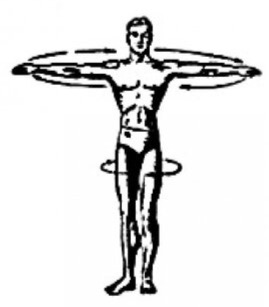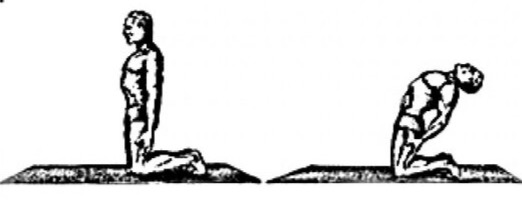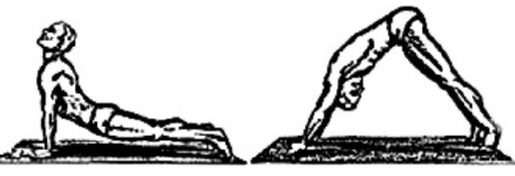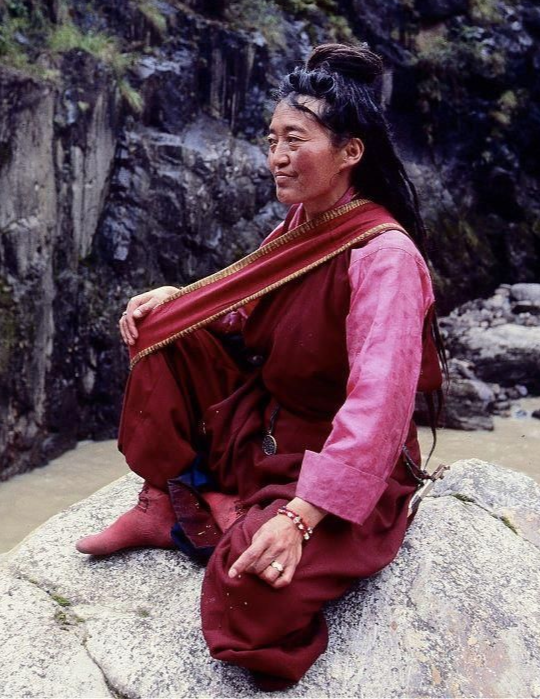The most famous Tibetan Yoga practices that have been introduced to the West.
What is Tibetan Yoga?
Tibetan yoga is the hidden treasure at the heart of the Vajrayana Buddhism: a spiritual and physical practice that seeks an expanded experience of the human body and its energetic and cognitive potential.
Most of the Tibetan Yoga practices are secret and can only be introduced to the advanced Vajrayana practitioners. Some of the practices require at least several years of intense meditation retreats completed prior starting the Tibetan Yoga.
Who are Tibetan Yogis?
Tibet yogis are believed to have phenomenal, almost magical, powers.
Buddhist yogis of Tibetan Buddhism are non-celibate and do not renounce the material world.
You can read more about Tibetan Yogis – here.
You can read more about Tibetan Yoga of dream and sleep – here and here.
You can read more about The Six Yogas of Niguma – here.
The Five Tibetan Rites
Five yoga poses of Tibet
The Rites are said to be a form of Tibetan yoga similar to the yoga series that originated in India.
Although the Rites have circulated amongst yogis for decades, skeptics say that Tibetans have never recognized them as being authentic Tibetan practices.
Legend says that a British explorer learned them in a Himalayan monastery from Tibetan monks who were living in good health far beyond normal lifespans.
Tibetan Yoga Rites aims to heal the body, balance the chakras, and reverse the aging process in just minutes a day.
First Rite

Stand erect with arms outstretched, horizontal with the shoulders. Now spin around until you become slightly dizzy. There is only one caution: you must turn from left to right.

Second Rite
- Lay on your back, tucking arms under body
- Inhale through nose as you raise legs to 90°, keeping them straight if possible
- Flexing feet will deepen stretch in back of legs
- As legs raise, lift head and tuck chin to chest (drishti: nose)
- Keep shoulders on the floor as you raise your head
- Exhale through nose as you lower head and legs to floor

Third Rite
Kneel on a rug or mat with hands at sides, palms flat against the side of legs. Then lean forward as far as possible, bending at the waist, with head well forward—chin on chest. The second position of this Rite is to lean backward as far as possible. Cause the head to move still further backward. The toes will prevent you from falling over backward. The hands are always kept against the side of the legs. Next come to an erect (kneeling) position, relax as much as possible for a moment, and perform Rite all over again.

Fourth Rite
Sit erect on rug or carpet with feet stretched out in front. The legs must be perfectly straight — back of knees must be well down or close to the rug. Place the hands flat on the rug, fingers together, and the hands pointing outward slightly. Chin should be on chest – head forward.

Fifth Rite
Place the hands on the floor about two feet apart. Then, with the legs stretched out to the rear with the feet also about two feet apart, push the body, and especially the hips, up as far as possible, rising on the toes and hands. At the same time the head should be brought so far down that the chin comes up against the chest. Next, allow the body to come slowly down to a ‘sagging’ position. Bring the head up, causing it to be drawn as far back as possible.
The first week: do three repetitions of each movement.
After the first week: add two or three repetitions/week until you get to 21 repetitions of each Rite (considered to be the full practice).
Be patient and don’t rush your body. Build up slower if needed.
It’s more important to do each exercise correctly than to focus on speed.
Follow the recommended breathing pattern for each movement, keeping the breathing full and continuous.
Take two cleansing breaths (full breath in through the nose, complete breath out through the mouth, making an ‘o’ with your mouth) between each rite.
If you’re short on time, do fewer repetitions. Better to do just a few than to skip a day because you don’t have time for the whole practice.
Modify moves if needed. Don’t strain.
If your circumstances allow, please consider donating to enable Buddha Land to stay online and to keep growing. Every dollar truly helps!
For donations:
buymeacoffee.com/buddhaland
My Meditation Marathon – The Mindfulness Journal
You can order one here.




